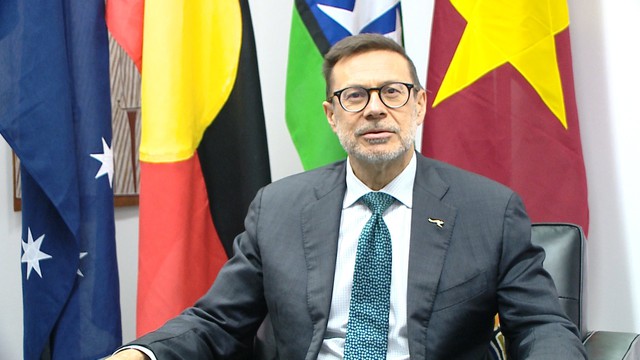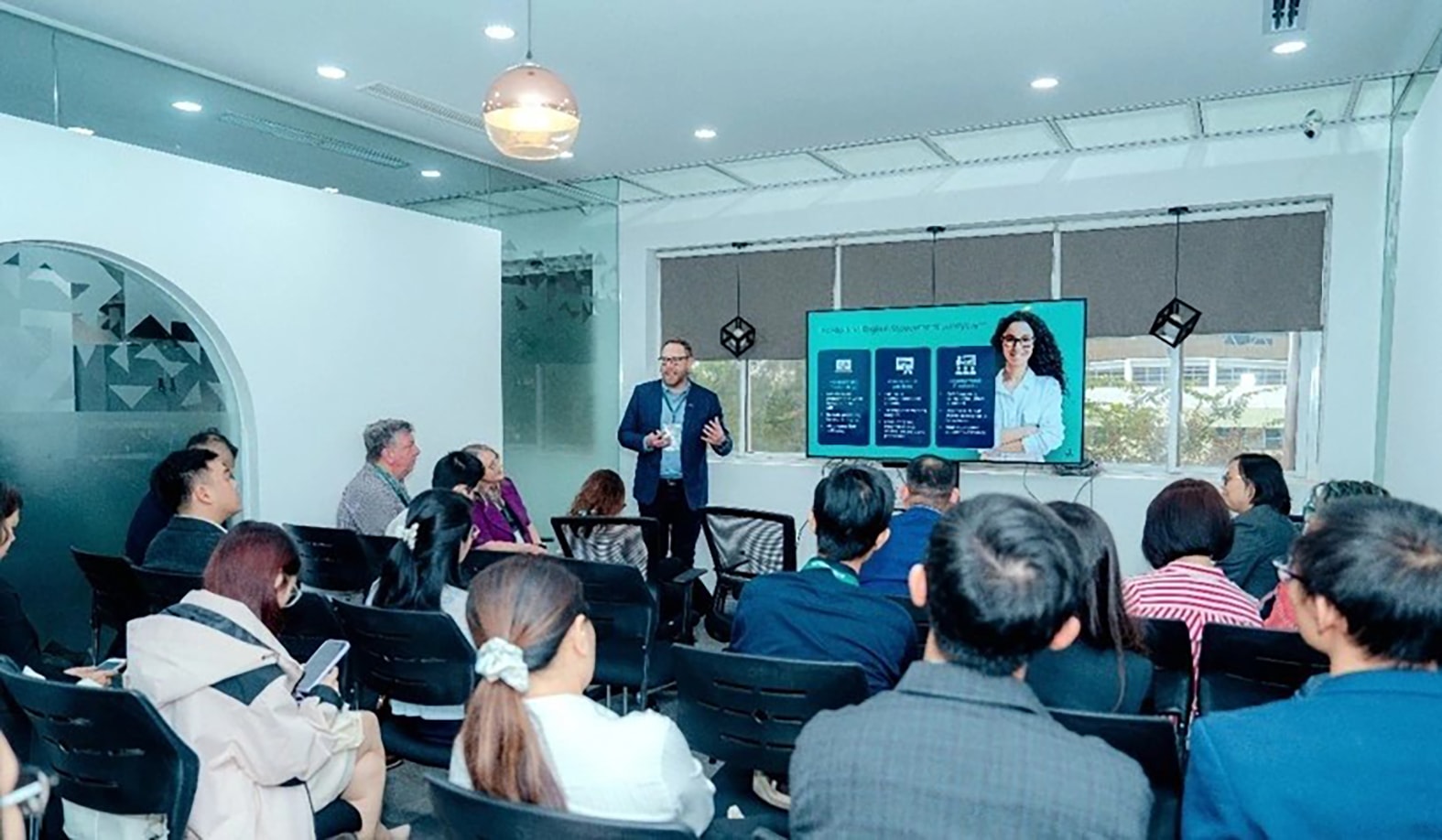Vietnam: From innovation to investor confidence
Australia stands out as one of the few countries that has turned innovation from a political slogan into a genuine engine of growth. Vietnam, meanwhile, is entering a new phase — where digital transformation, artificial intelligence, and data security demand not only bold ideas but also strong governance and investor confidence.

Andrew Goledzinowski, former Australian Ambassador to Viet Nam
In this interview with Business Forum Magazine, Andrew Goledzinowski, former Australian Ambassador to Viet Nam, a specialist in corporate governance and innovation policy with extensive experience in both Australia and Vietnam, shares insights on how Vietnam can shorten the journey from innovation to market success while building a foundation of trust among global investors.
Australia has long been considered a regional hub of innovation. In your view, what are the key policies and actions that enabled the Australian government to turn innovation into a genuine driver of growth, rather than just a slogan?
Australia made innovation work by aligning policy, money, and markets so each bit of the policy framework supported the other bits. That meant steady funding that follows an idea from the lab through to commercial testing and early manufacture, not just one‑off research grants. It also meant changing incentives inside universities and public research agencies so success is measured by licences, spin‑outs and industry partnerships, and not just by published papers.
Government acted as an early customer through procurement programs and prizes that created credible first buyers, which in turn helped start‑ups win private investment. This is particularly important in some sectors such as defence industries.
Regulators were updated with practical tools — sandboxes for fintech, AI and health tech and faster approval paths where appropriate — so firms could test and prove their concepts without being crushed by compliance.
Finally, the system invested in people: vocational pathways, postgraduate and short executive courses that link technical skills to the commercial and managerial skills that founders need. This is how good ideas become viable businesses.
Australia has invested heavily in building an innovation ecosystem, particularly in connecting universities, businesses, and investment funds. How would you assess Vietnam’s strengths and weaknesses across these three factors? What lessons can Vietnam learn to accelerate the transformation of research into globally competitive products and services?
Vietnam has many of the raw ingredients it needs, including a growing pool of STEM graduates and a culture of entrepreneurship that is much stronger than Australia’s. But university incentives still often favour academic outputs over commercial outcomes; technology transfer offices are patchy; and early‑stage finance for proof‑of‑concept and initial scale-up remains limited or fragmented. Many projects fail because there is no reliable “first customer” and private investors can be risk averse, especially for deep tech that needs patient capital.
To speed up the pipeline, Vietnam should professionalise tech transfer offices (TTOs) at universities and reward measurable commercial outcomes, not just published papers. It would help to create predictable first‑buyer programs — through procurement or public‑private pilots — so start‑ups can demonstrate real demand and build references. Also, Vietnam should expand blended finance vehicles that pair public seed capital with private funds to absorb early risk and signal quality to other investors.

Austrade and BK Holdings (Hanoi University of Science and Technology) co-organized a seminar titled “Digital Transformation in Higher and Vocational Education: Vietnam – Australia.”
These steps would tighten the feedback loop between industry and universities so that research agendas reflect what is commercially feasibility and needed. I expect that Vietnam’s National Innovation Centre (NIC) is playing a role in each of these areas. Vietnam has the opportunity to learn from other jurisdictions, including Australia’s and compress what took decades elsewhere into a matter of years.
From your experience and observations, what are the most critical weaknesses in corporate governance that Vietnamese entrepreneurs need to address immediately in order to build investor confidence internationally?
Vietnam has some terrific companies with which it has been, and continues to be, a pleasure to work. But there are three governance issues that often worry foreign investors (and potential investors) in Vietnam: opaque ownership and related‑party transactions, weak board independence and capacity, and inconsistent disclosure on material risks.
Investors price risk quickly: unclear ownership structures and undisclosed related‑party deals raise red flags about insider enrichment. Boards too often look like family steering committees rather than independent oversight bodies. Entrepreneurs should broaden their boards beyond friends and family members to add highly credentialed individuals including those with commercial experience, business women, and non-Vietnamese experts with international standing.
Disclosure standards lag what global investors expect, particularly on related‑party deals, beneficial ownership and ESG risks such as climate exposure or supply‑chain vulnerabilities. Fixing these issues will yields big returns. With the upgrade to “emerging market” status, great opportunities lie ahead for Vietnam. There is a wall of money available for Vietnamese companies that can win international investor confidence.
Australia has developed various corporate governance practices and models—often different between large corporations and SMEs. Which aspects of these models do you think Vietnam could adopt, based on your experience and observations here?
Australia offers governance practices that are useful and adaptable, but they should be applied pragmatically in Vietnam.
For larger and listed firms, they should adopt clear committee structures — audit, risk and remuneration — mandatory, standardised disclosure of related‑party transactions and regular board evaluations.
For SMEs, require a minimum level of independent oversight, for example one non‑executive director with finance or industry experience, and a simple investor‑friendly disclosure pack covering ownership, related parties, key contracts and basic risk mapping. A standard beneficial‑ownership register and enforceable conflict‑of‑interest rules across the board would be transformative.
In Australia almost all board directors are graduates of training provided by the Australian Institute of Company Directors (AIDC). I recently became a member of the AIDC myself. This rigourous training ensures a high degree of professionalism amongst non-executive board directors. Something similar could be considered in Vietnam and I’m sure that the AIDC would be in a position to help.








